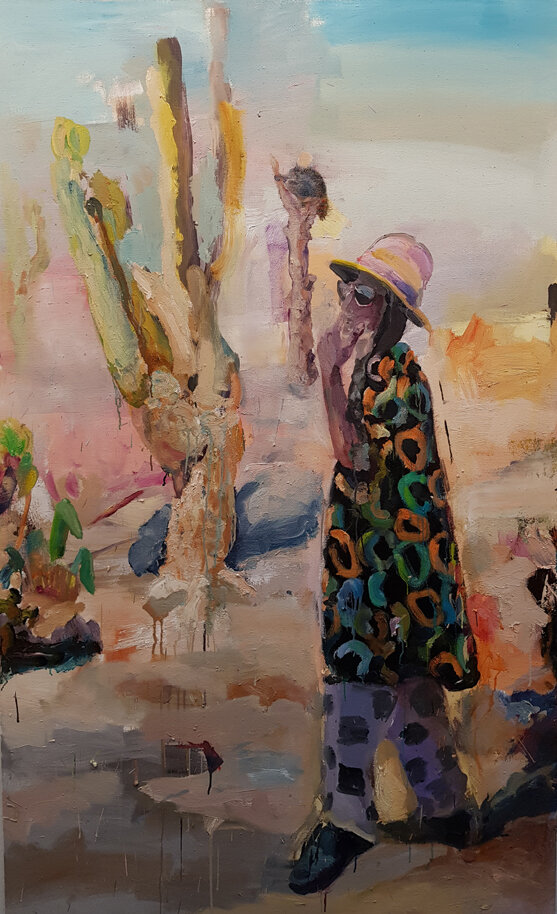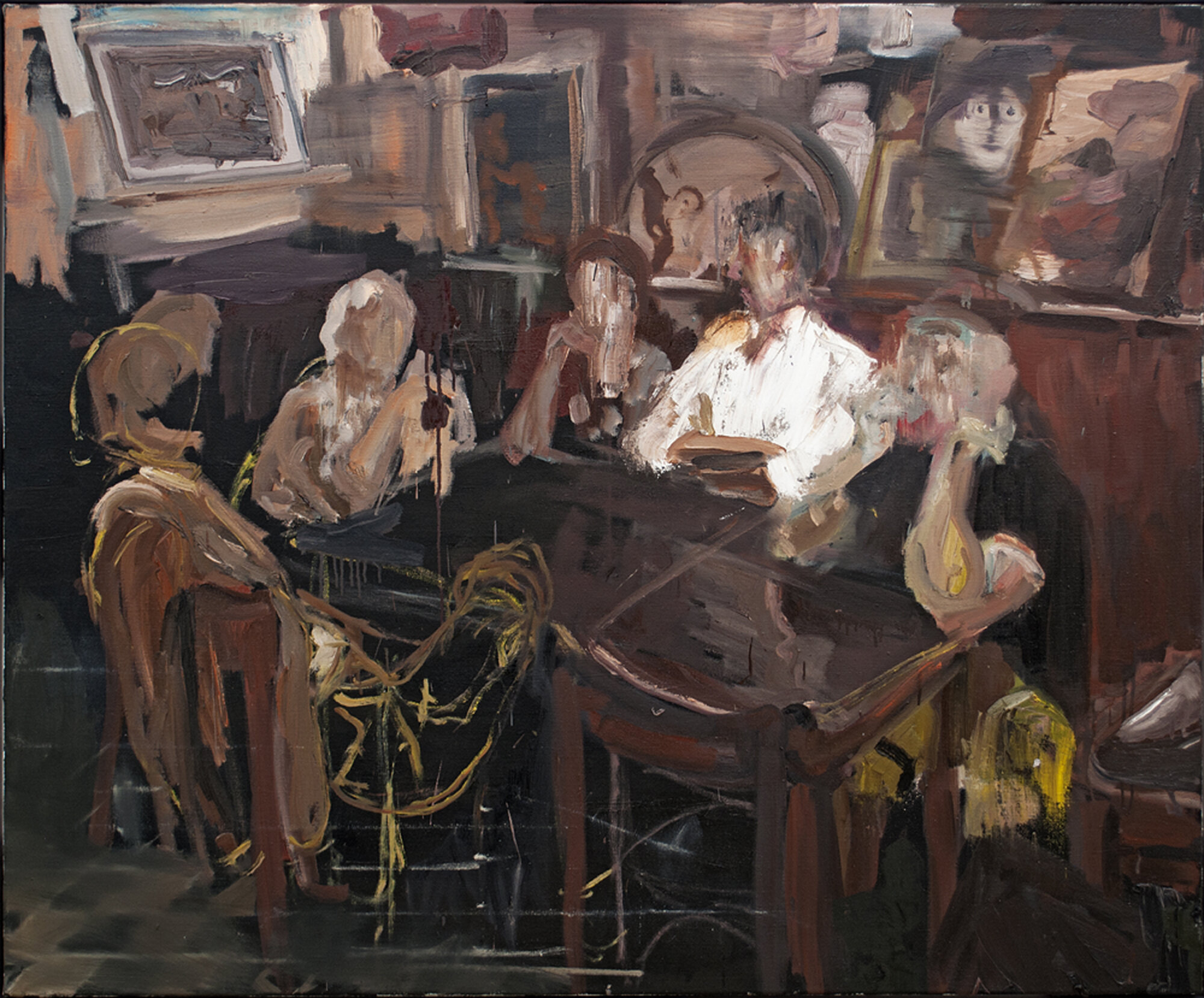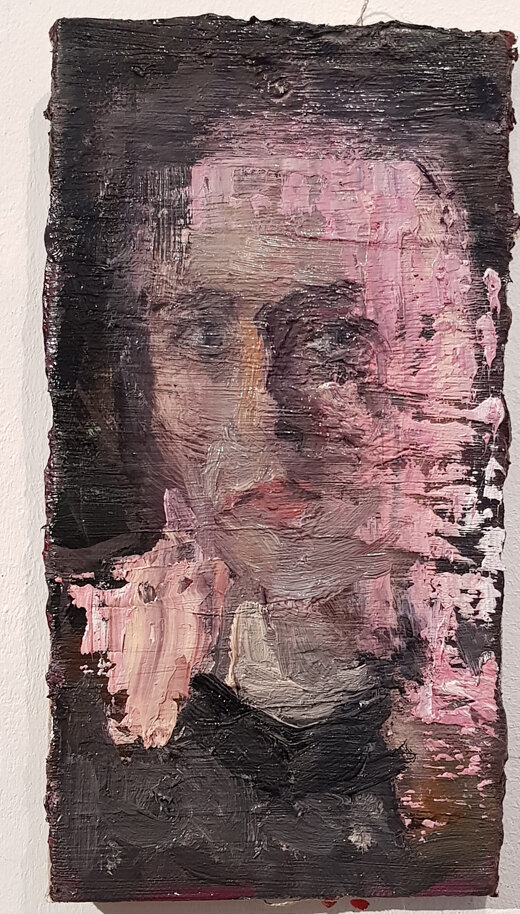Gerard Waskievitz
Gerard Waskievitz is a painter who lives and works in Berlin, Germany. Waskievitz creates oil on canvas compositions that suspend the viewer directly between figurative and abstract subject matter. Observers of his work are challenged to navigate through motifs of existence and transience, appearing as whirlwinds of color and indistinguishable objects, beginning with the process of recognition and then on to interpretation.
Kaktusfeige and Späte Mädchen both made in (2020) reflect the shock, mystery and malaise of the Covid-19 era. The first painting, also known as “Prickly Pear”, shows a solitary, wandering who appears to walk tepidly across a deserted, arid landscape. Wearing baggy clothes, black shoes, sunglasses and a hat, this unknown person gazes numbingly to the left of the painting, as if looking toward and also away from our environment. The second painting, also known as Running Late, portrays two women with their arms full as they seek a way out of the murky landscape that appears in the background behind them.
Paris Bar Berlin (2019) is far less detailed, yet far more textured, and shows the outlines of five figures huddling around a table. The interior takes on a brown glow, typical of such interiors that combine low light, heavy wood furniture, mirrors and paintings crowded frame-to-frame across each wall. Even though the figures in Gerard Waskievitz’s paintings are central to his work, their identities will never be known to the casual observer. Instead these likenesses are transitory, and remain open to observers’ associations. Ohne Titel (2019) stands out since it shows a clear, non-obscured portrait. In similar works, the head is either missing or covered with the shape of a square.
Grau from 2018 shows the standing figure of a woman who is drenched in gray. The pigment drips down, runs and smears across the canvas, nearly obscuring her face. A dog with long gray fur can be seen in the background, on the right, echoing the shape and forms of the weighty clouds above. Interior (2018) continues to blur details. However this work introduces a visual rhythm that starts with a painted mark followed by a cross-hatch and then a square. The intersection of colors quickly unfolds into a giant, church-like interior.
The artist’s use of color gradually becomes a secondary element, despite the fact that the hues are much brighter and appear far more intense. Dr. Heide M. Roeder, Art Historian of BW Bank + Börse in Stuttgart, has identified Waskievitz’s subtle paint layering as a pentimento that becomes visible when the artist combines vibrant, bright colors over a dark surface. Waskievitz had previously traveled to Italy to learn this specific technique that was used frequently during the Italian Renaissance.
Gerard Waskievitz first studied painting in Poland, where he worked for several years as the leading stage painter in theater. He also studied at the Academy of Fine Art in Essen, Germany and eventually settled in Berlin. From 1997 to 2003 his paintings appeared frequently in solo exhibitions throughout Berlin. Since 2007 his paintings have been included in an array of group exhibitions at museums and art galleries in England, France and Austria. Waskievitz’s paintings have also appeared in Preview Berlin, Art Market Budapest, Art Fair Cologne and Art Karlsruhe. Gerard Waskievitz is a member of the Consortium of Berlin Artists (VBK) and is represented by the Michael Helfrich Galerie in Berlin. From November 2019 to January 2020, Art Appletree Gallery in Baden-Baden presented Gerard Waskievitz: Das zweite Gesicht.



